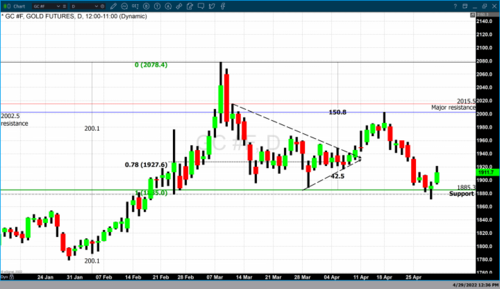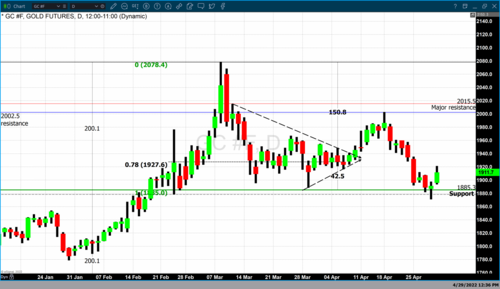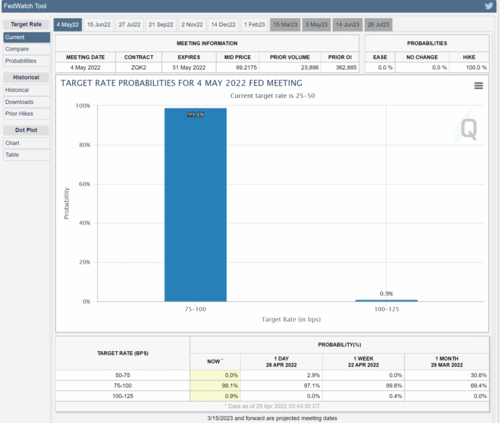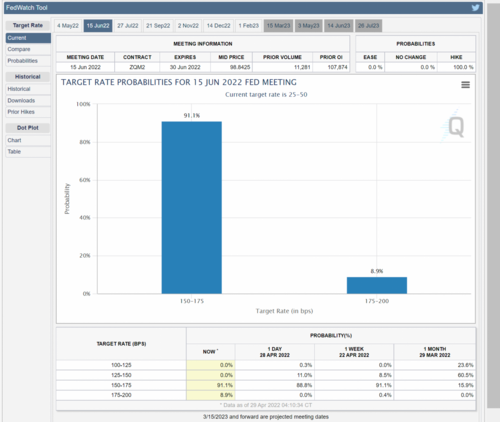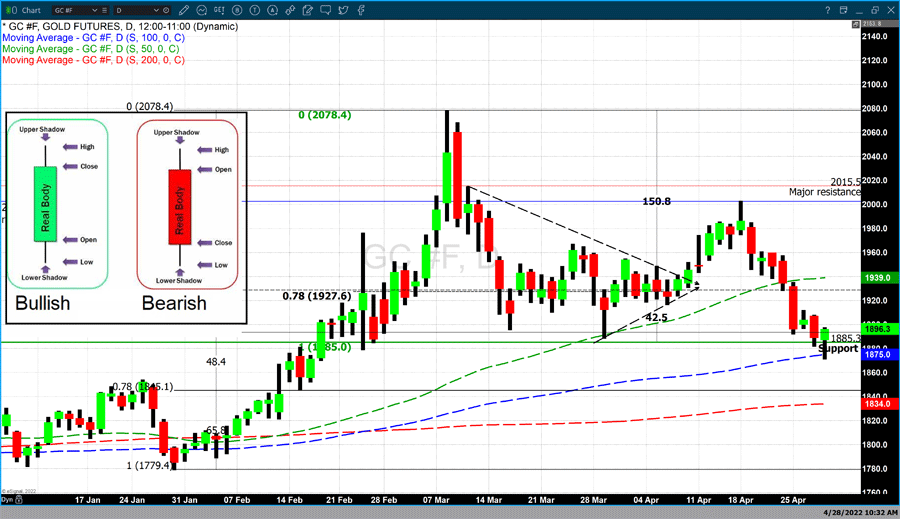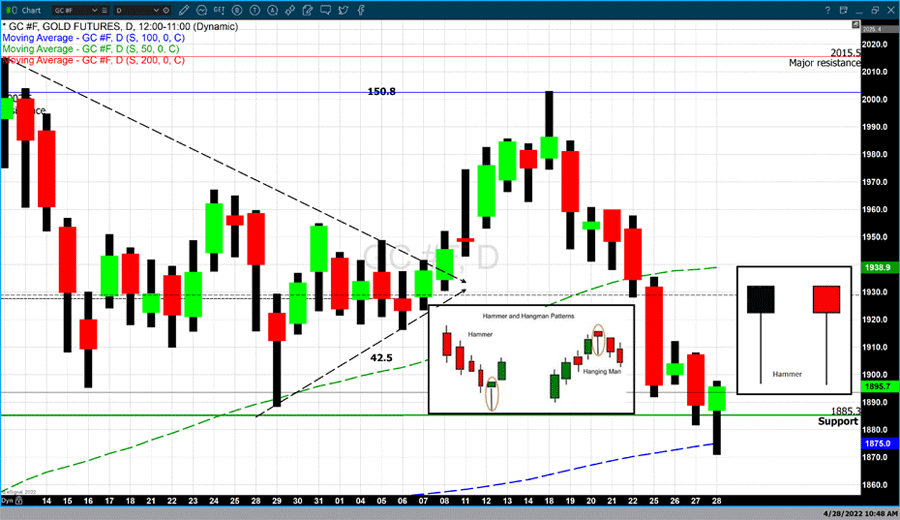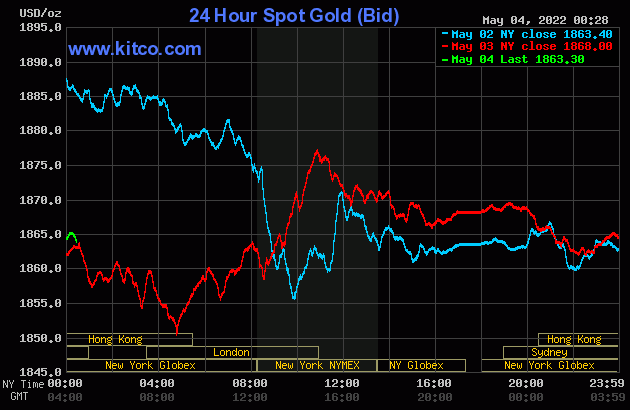
Gold, silver see tepid short covering after recent losses
Gold and silver prices are firmer in midday U.S. Trading Tuesday. Short covering by the shorter-term futures traders was feature today after both metals hit 2.5-month lows on Monday. The bulls are trying to stop the bleeding in down-trending markets that have been punished by a strong U.S. dollar and rising bond yields. June gold futures were last up $7.50 at $1,871.10 and May Comex silver was last up $0.101 at $22.65 an ounce.
The economic data point of the week in the U.S. Federal Reserve Open Market Committee (FOMC) meeting that began Tuesday morning and ends Wednesday afternoon with a statement. It's widely believed the Fed will raise the key U.S. interest rate by 0.5%, amid the highest inflation levels in 40 years. The monthly U.S. jobs report is also due out Friday morning.
The key outside markets today sees Nymex crude oil futures prices lower and trading around $103.00 a barrel. The U.S. dollar index is weaker in early trading. The yield on the 10-year U.S. Treasury note is presently fetching 2.954%. The 10-year yield early this week hit a 3.5-year high just above 3%. The yield on the benchmark German 10-year bond (bund) rose above 1% for the first time since 2015.
Global stock markets were mostly higher overnight. U.S. stock indexes are mixed at midday. The Nasdaq and S&P stock indexes are near their 12-month lows scored Monday. A brief "flash crash" occurred in European stock markets Monday, reportedly on an erroneous trade entered by a Citigroup in Sweden.
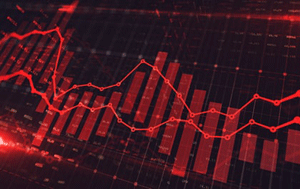 Paul Tudor Jones: 'Capital preservation is the most important thing' right now
Paul Tudor Jones: 'Capital preservation is the most important thing' right now
In other, the Euro zone producer price index for March was up 5.3% from February and up 36.8%, year-on-year. The mammoth rise was mostly due to soaring energy costs, but still, excluding energy the PPI was up 13.6%, year-on-year.
Australia's central bank overnight raised its key interest rates by 0.25%–the first rate hike by the Reserve Bank of Australia in a decade.
.gif)
Technically, June gold futures See a price downtrend still in place on the daily bar chart. Bears have the overall near-term technical advantage. Bulls' next upside price objective is to produce a close above solid resistance at last week's high of $1,935.50. Bears' next near-term downside price objective is pushing futures prices below solid technical support at $1,800.00. First resistance is seen at today's high of $1,878.40 and then at $1,883.00. First support is seen at today's low of $1,849.70 and then at $1,835.00. Wyckoff's Market Rating: 4.0
.gif)
May silver futures see a steep price downtrend in place on the daily bar chart. The silver bears have the solid overall near-term technical advantage. Silver bulls' next upside price objective is closing prices above solid technical resistance at $24.00 an ounce. The next downside price objective for the bears is closing prices below solid support at the December low of $21.445. First resistance is seen at Monday's high of $22.83 and then at $23.00. Next support is seen at today's low of $22.475 and then at this week's low of $22.12. Wyckoff's Market Rating: 2.5.
May N.Y. copper closed up 70 points at 426.25 cents today. Prices closed nearer the session low today. Prices Monday hit a 4.5-month low. The copper bears have the solid overall near-term technical advantage. A price downtrend is in place on the daily bar chart. Copper bulls' next upside price objective is pushing and closing prices above solid technical resistance at 450.00 cents. The next downside price objective for the bears is closing prices below solid technical support at the December low of 411.65 cents. First resistance is seen at today's high of 434.40 cents and then at this week's high of 438.55 cents. First support is seen at this week's low of 419.00 cents and then at 415.00 cents. Wyckoff's Market Rating: 3.0.
By Jim Wyckoff
For Kitco News
Time to buy Gold and Silver on the dips
Tim Moseley

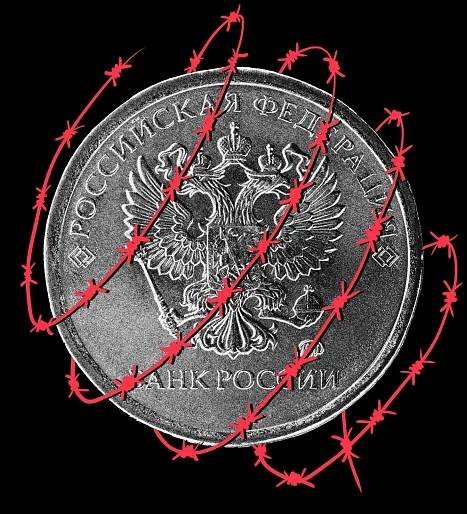
.png)
.png)
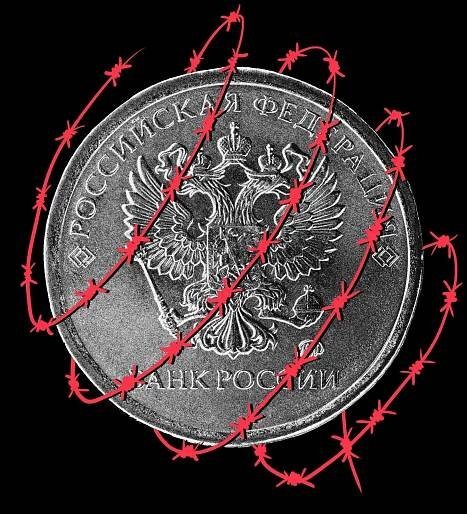

(1).gif) Gold is an 'ideal' asset right now but why isn't the price higher? Fidelity weighs in
Gold is an 'ideal' asset right now but why isn't the price higher? Fidelity weighs in.gif)
.gif)





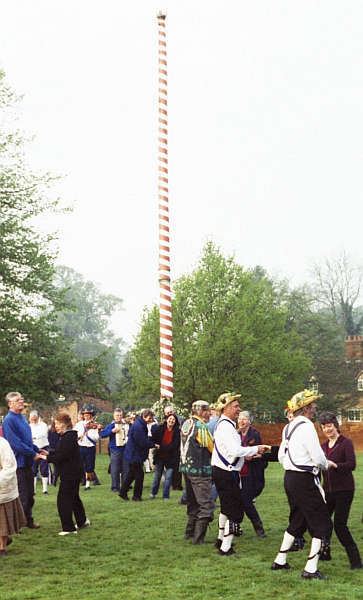 Ickwell maypole
Ickwell maypole


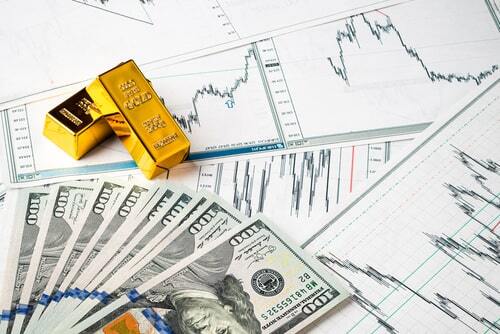
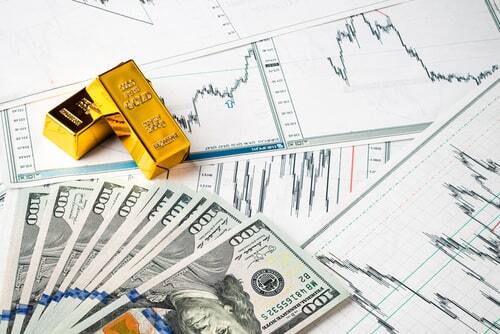
 Gold is an 'ideal' asset right now but why isn't the price higher? Fidelity weighs in
Gold is an 'ideal' asset right now but why isn't the price higher? Fidelity weighs in